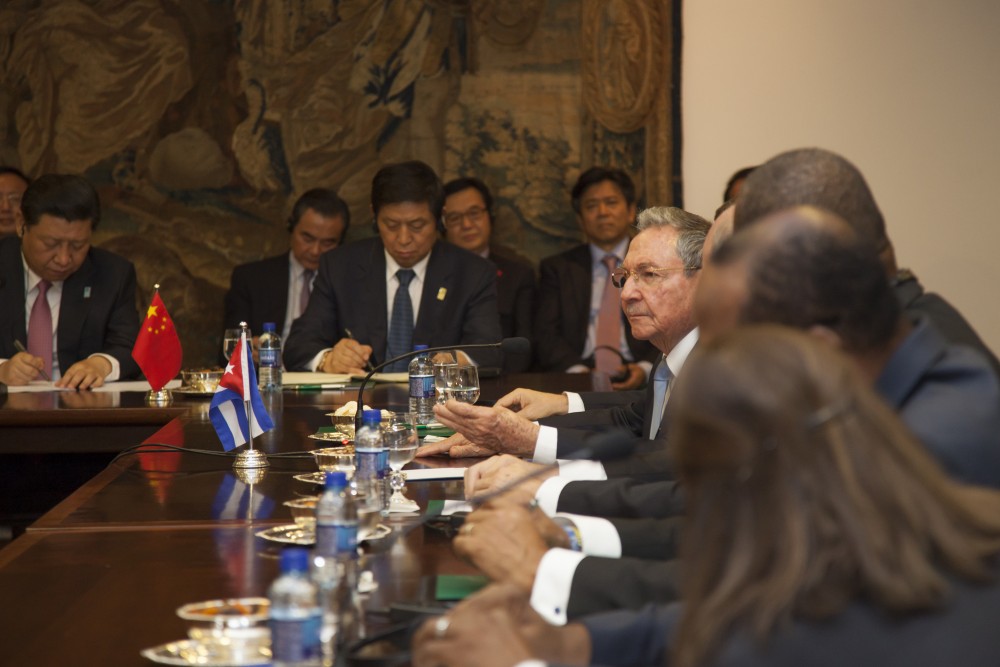The U.N. climate negotiations in Lima ran over by two days before governments finally reached an agreement. All countries, including those from Latin America and China, are invited to put forward their ‘intended nationally determined contributions’ by March 2015 as part of what was agreed in Lima.
Yet current relations between Latin America and China – which are primarily focused on carbon-intensive sectors such as mining and fossil fuels – could undermine Latin American countries’ efforts to put forward ambitious national contributions.
These contributions will be a central feature of a new climate change agreement to be finalised in Paris in December 2015, which will come into effect from 2020. The contributions will include plans for how countries will reduce their greenhouse gas emissions and adapt to the impacts of climate change.
They could lead to significant changes across economies, especially in carbon-intensive sectors, and could be integrated with goals to reduce poverty and inequality while sending signals to the private sector to invest in these efforts.
As the U.N. climate talks enter the crucial final leg to Paris, Chinese-Latin American relations could prove significant for whether Latin American countries put forward ambitious or modest national contributions in 2015.
Important advances on national climate policy by some Latin American countries and China could bode well. But China’s formidable, carbon-intensive presence in Latin America runs the risk of pulling the region in an unsustainable direction. This could undermine Latin American countries’ appetite for building far-reaching national climate contributions.
The China-CELAC (Community of Latin American and Caribbean States) Forum will meet for the first time early next year in Beijing. A new Chinese-Latin American and Caribbean Cooperation Plan 2015-2019 will also be launched, which will likely focus on issues including energy, infrastructure, agriculture and manufacturing.
HEAVY CARBON FOOTPRINT
This list looks shortsighted. The forum and cooperation plan have the potential to be a transformative means to reverse the high-carbon partnership between Latin America and China, and boost low-carbon opportunities between both actors.
Crucially, the forum should attempt to coordinate the development of China and Latin American countries’ national contributions and how they relate to trade and commercial ties.
China and Latin America have expressed their interest in collaborating on climate change in previous statements, yet no specific work exists. With slower economic growth forecasts for China and Latin America next year, the forum’s discussions will probably focus on boosting growth. That puts climate change at risk of falling off of the agenda.
China and Latin American countries need to focus on climate change for two reasons.
Both have a critical role to play in the U.N. climate talks, since together they account for approximately 40 percent of total global greenhouse gas emissions.
China’s considerable presence in Latin America tends to have a very heavy carbon and environmental footprint which may be entrenching unsustainable development pathways, as well as exposing both countries to greater climate change impacts.
Following the launch of the New Climate Economy report, which highlights the economic benefits of reducing climate risks and exploiting low-carbon growth, the forum and the cooperation plan should attempt to minimise the high-carbon footprint of their relations and maximise the low-carbon opportunities.
The Inter-American Development Bank (IDB) says Latin America can meet its rapidly rising projected 2050 energy needs 22 times over through renewable energy sources including solar, wind and geothermal energy.
RENEWABLE ENERGY OPPORTUNITIES
At least 14 Latin American countries have renewable energy targets while the IDB is committed to channeling 25 percent of its lending to support climate change and renewable energy initiatives in Latin America.
Given China’s growing presence at the bank and its global leadership on renewable energy, China should dramatically increase its financing for Latin American renewable energy projects. The China-CELAC Forum should consider the creation of a renewable energy investment facility to support this process.
Latin America is currently the most urbanised region in the world, with transportation emissions increasing quickly as private car ownership accelerates. Meanwhile, China’s rapid urbanisation and smog-filled cities represent a public health crisis.
Both players could benefit substantially from using the forum to share experiences on sustainable urban transport, reducing air pollution and cooperating on electric transport and high-speed rail options.
China and Latin America must drastically reduce the heavy environmental and carbon footprint of their activities, while improving economic performance and protecting existing environmental and climate policies.
Investment guidelines must be strengthened to minimise or eliminate detrimental environmental and social impacts. A drastic improvement is required to ensure the adequate participation of indigenous peoples and vulnerable communities who are often disproportionately affected by projects.
As the U.N. climate talks edge closer to the Paris deadline, the China-CELAC Forum could prove a transformative platform to take advantage of low-carbon opportunities.
By prioritising action on climate change, it could provide an economic boost for Chinese-Latin American relations and strengthen efforts to build ambitious national contributions in 2015.
